Why Is My Succulent Dying? How to Troubleshoot and Fix It
I absolutely love shopping online for succulents and gardening supplies. If you aren't already saving money by comparing prices online, give it a try! Here are six of my favorite things that I have purchased online as I build my own succulent oasis:
I’ve killed my fair share of succulents. And dare I say, a few more might come to their dire end before I’m finished with them.
I think it’s important to tell you upfront that it’s normal for succulents to die. It really is! Until you know how to best care for each one, there will be struggles along the way.
If your succulent is dying, it’s essential to troubleshoot for the possible reasons. Once you’ve learned the cause, you can quickly remedy the situation and potentially bring your succulent back to good health.
But most importantly, don’t get down on yourself for killing a succulent. As I said, it happens to all of us–and the best thing you can do is learn from your experiences and try again.
What Does a Dying Succulent Look Like?
A dying succulent can look like any number of things. The leaves might be wilting, yellowing, or browning. The stems might be soft to the touch. The plant might be overall mushy. Leaves may simply fall from your plant at the slightest touch, or the stem may nearly droop down toward the soil.
If you see any of these signs, it’s important to take action immediately. While your succulent may not be dead yet, it could be heading that way quickly. Your best option is to troubleshoot what your succulent really needs in order to come back to life and thrive.
Related: How to Fertilize Succulents (A Complete Guide)
Indications Your Succulent is Dying (and How to Fix Them)
So, why is my succulent dying? Here are some possible reasons and solutions:
1. Dead Leaves
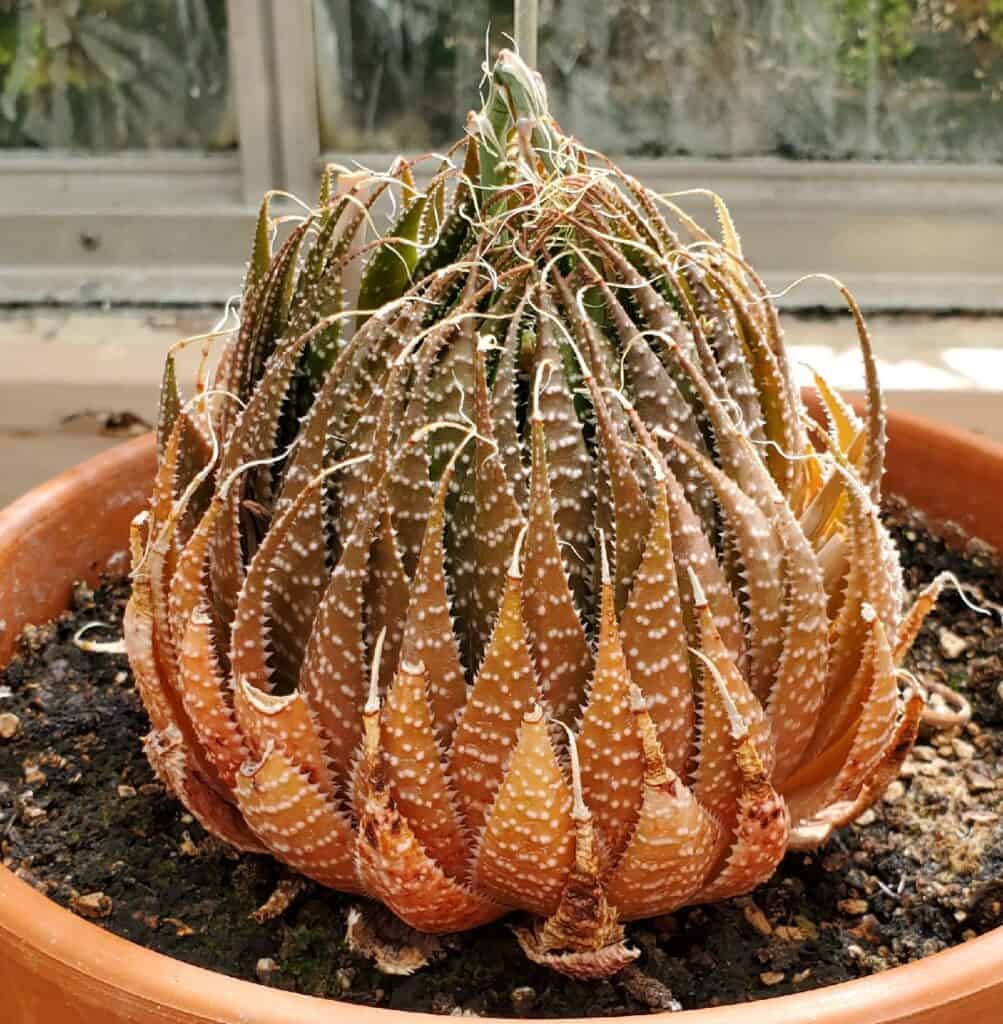
Dead or dry, dying leaves can indicate that your plant is unhealthy. But it’s actually common for certain types of succulents to absorb their lower leaves in preparation for new growth.
If you notice that there are more dead leaves on your succulent than normal, it could indicate that your plant is thirsty. If the leaves are completely dried to the stem, gently remove them from the plant. Then, check the soil to see if it’s also dry. If you haven’t watered your plant within the last few days, and the soil is completely dry, give your succulent a deep watering.
Monitor your plant to make sure it doesn’t absorb more of its leaves in the next few days to weeks. If it does, it’s time to check below the soil (see #2).
2. Mushy Roots
The cause of a dying succulent can be hidden beneath the soil in the root system. Gently remove the plant from its pot, separate the plant from the potting mix, and check to see if the roots are healthy.
Healthy roots should be firm and green when the soil is washed away. A black or mushy root system indicates root rot, and the plant can no longer take in water.
If the roots are unhealthy, there are a few options. First, start by cutting away the rotting roots with a clean, sharp pair of scissors or garden sheers. As long as there are some healthy roots left, set the plant aside in a dry, shaded location, and allow the open wounds to callous over for at least 48 hours. Check to make sure the cuts are dried over and replant into fresh, well-draining soil.
If the entire root system is black and mushy, then it’s time to cut the plant at each healthy point and start to propagate new babies and roots before the entire plant is taken over by rot and dies. This could be done by beheading the plant, cutting the stem at the root, or gently twisting the leaves from the stem.
There are lots of ways to propagate succulents that can turn one dying plant into multiple thriving babies.
3. Discolored Leaves
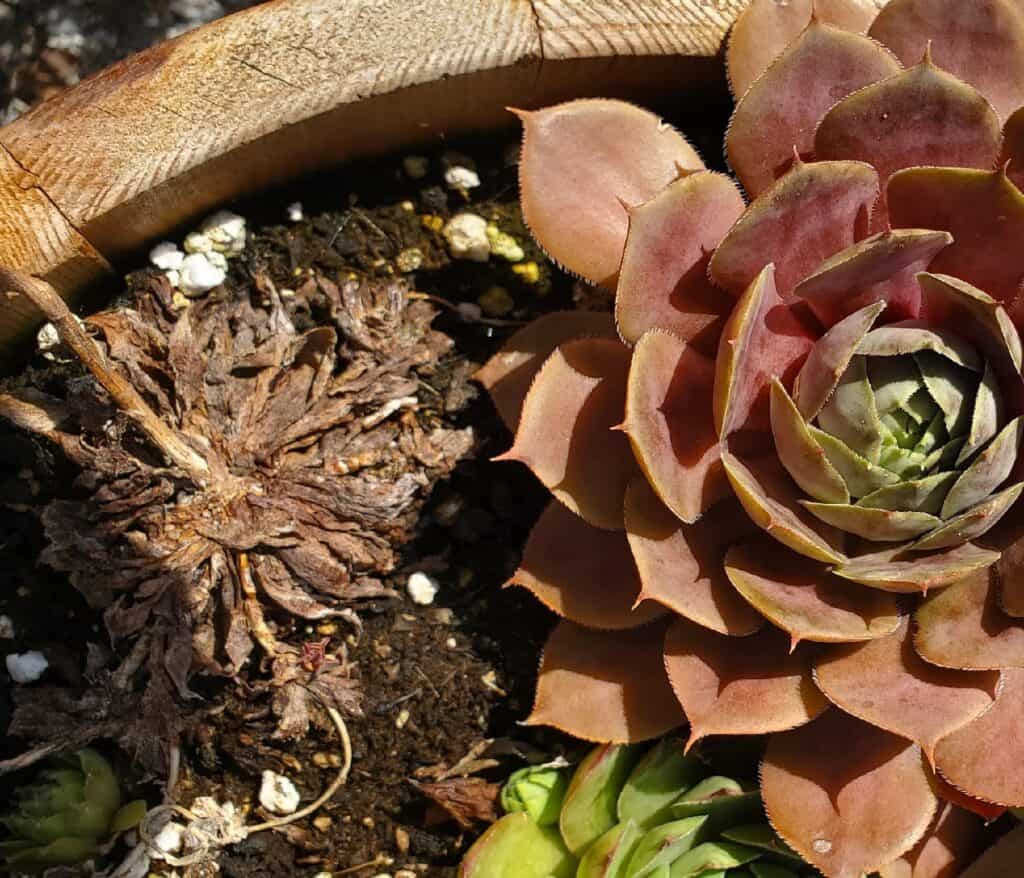
If your succulent’s leaves are turning brown, yellow, or red, it could indicate that the plant is getting too much sun. If you notice this happening, move your plant to a shadier location. If moving your plant is not an option, consider adding some shade like a larger plant or a curtain.
Ultimately, try to acclimate your succulents to any new changes slowly. Chances are they are just being introduced to the harsh rays too quickly,
If the leaves of your succulent are overall green with small patches of discoloration (usually brown or red), this indicates sunburn. A sunburnt leaf cannot be healed, however, if given the right care, any new growth can be perfectly healthy going forward.
Yellow or translucent leaves mean the succulent is being overwatered. You can usually revive an overwatered succulent by removing it from the soil, cutting away rotting portions of the plant, and repotting in a well-draining succulent soil mixture.
4. Shriveling Leaves
If the leaves of your succulent are wrinkled or shriveled, this could indicate that the plant is not getting enough water. If you notice this happening, make sure to give your plant a good watering. If possible, try to water it in the morning so the plant has time to dry out during the day.
If you find that your plant is still shriveling after being watered, it could be that the potting mix you are using is too dense. To fix this, try repotting your succulent in a lighter, well-draining succulent soil mix.
You can also try bottom watering your dying succulent. Sometimes succulent leaves can react negatively when water sits on their leaves for any period of time. To avoid splashing the leaves, set the pot in a shallow dish of water for anywhere between two to four hours allowing the roots to hydrate the plant.
Remove the potted succulent from the water dish and allow it to dry out completely. Check to see if the leaves are still shriveled or puckered. Continue the same process every five to seven days until the plant leaves are back in good health.
5. Black or White Spots
If spots form on your succulent’s leaves, this usually means your plant has some type of mold or fungus growing on it. While these diseases may not kill your succulent, they are unsightly and spread to other plants quickly.
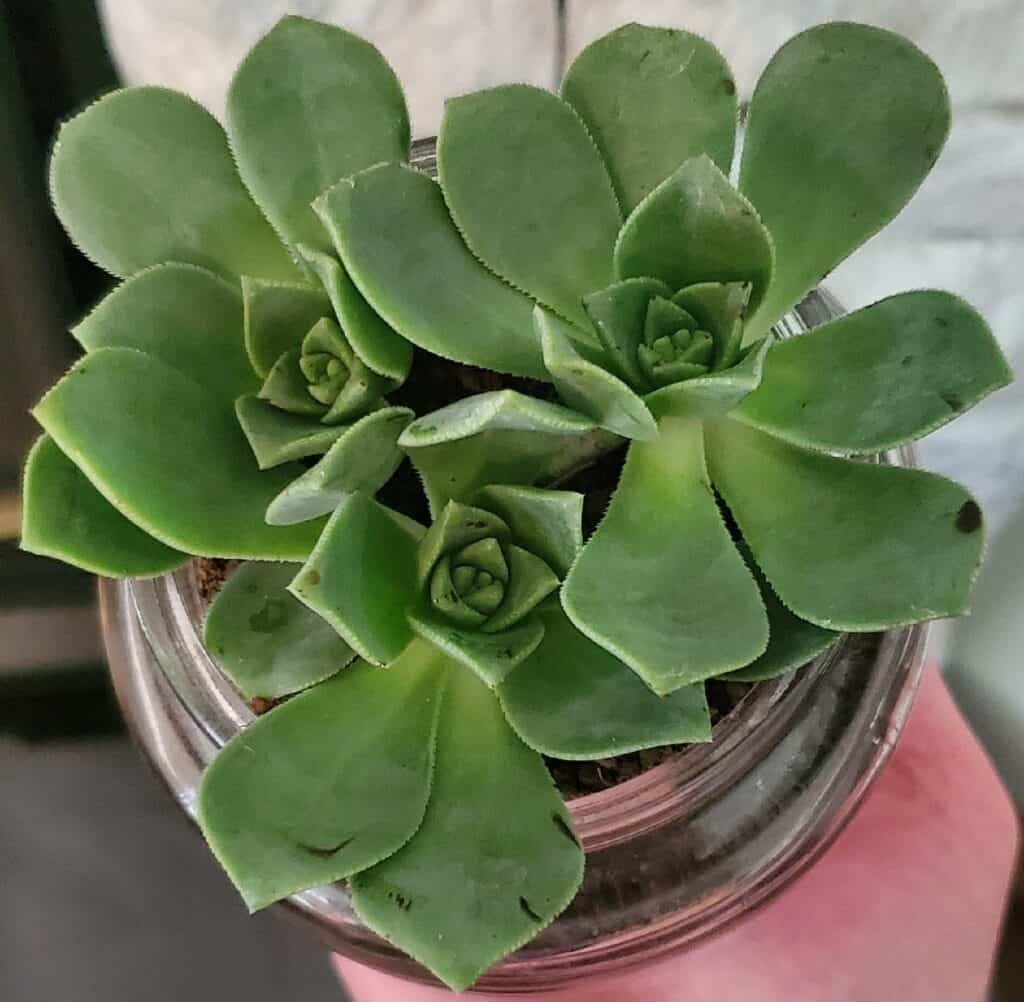
Black spots on succulents are usually caused by a fungus called sooty mold. This type of mold grows on the honeydew secretions of pests like aphids, whiteflies, and mealybugs.
To get rid of sooty mold, you must first get rid of the pests that are causing it. Try using an insecticidal soap or neem oil to get rid of the pests. Once the pests are gone, the sooty mold will go away on its own.
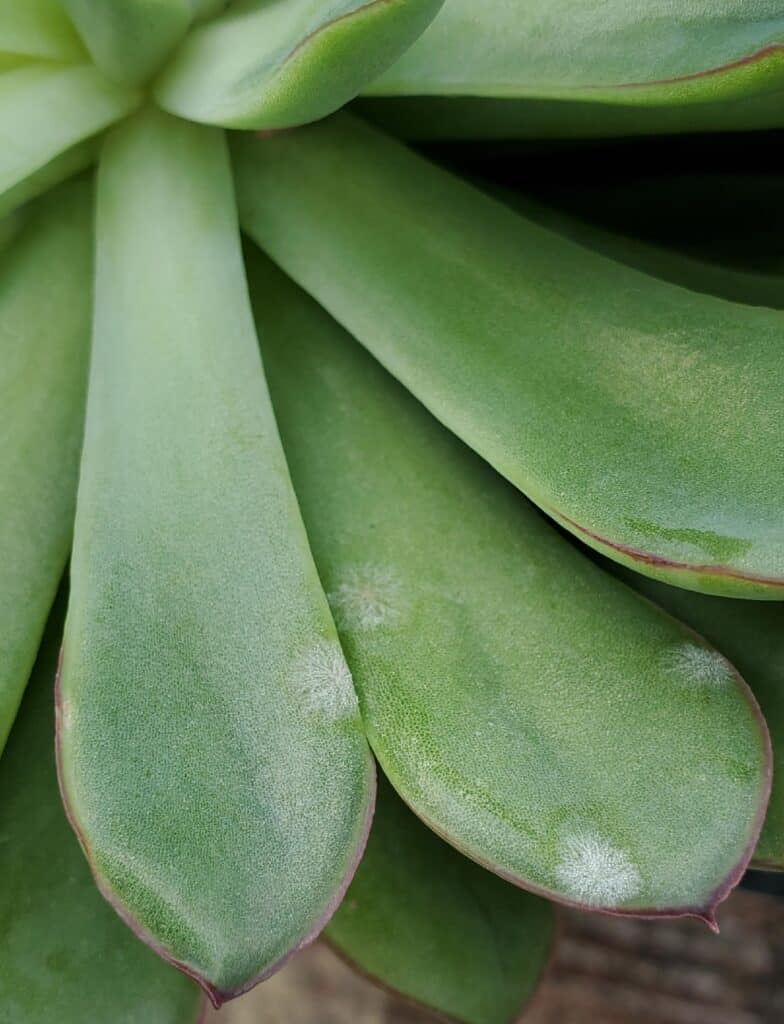
White spots on succulents are usually caused by powdery mildew. This type of fungus is commonly found in humid or wet conditions. To get rid of powdery mildew, try using a fungicide. You can also try removing the affected leaves and increasing air circulation around the plant.
If you notice any type of mold or fungus on your succulent, it is important to act quickly. These diseases spread quickly and can affect your entire collection if left untreated.
Related: How to Make Your Succulents Grow Faster and Bigger
6. Dropping Leaves
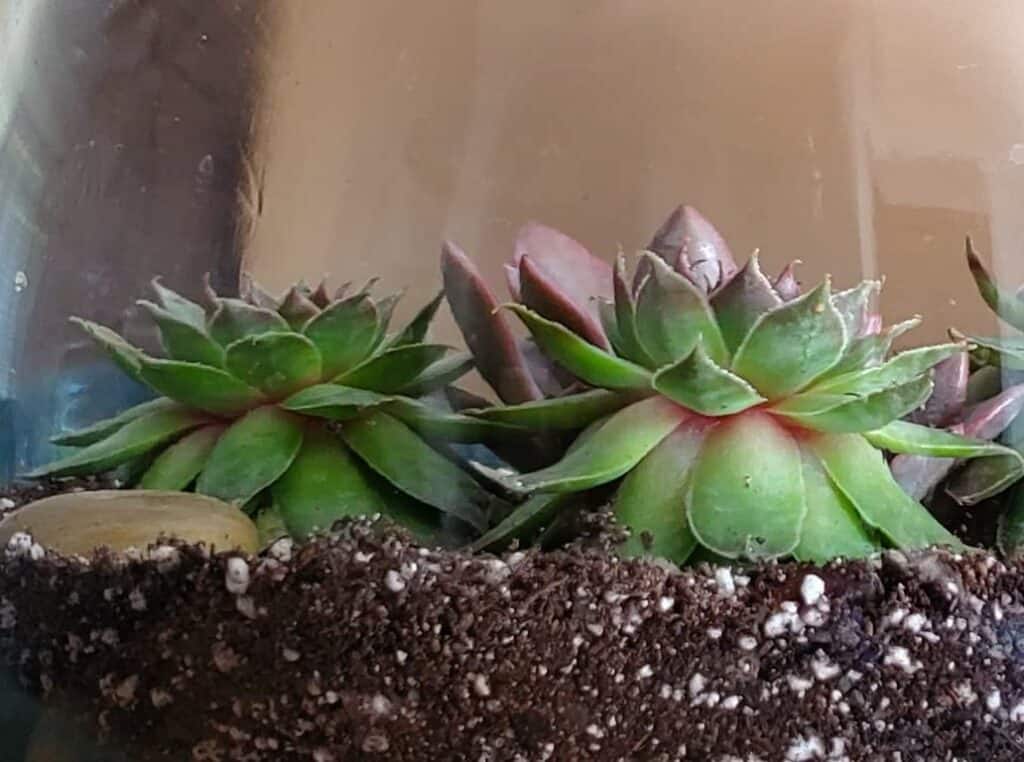
One of the most common reasons why succulents drop their leaves is because they are not getting enough light. Succulents need a good amount of sunlight to grow and thrive. If your plant is not getting enough light, it will start to drop its leaves in an attempt to get more light.
If you notice your succulent dropping its leaves, try moving it to a brighter location. If possible, try to give it at least six hours of bright sunlight every day. You can also try using a grow light to supplement the plant’s light needs. I use this Barrina grow light and have seen amazing improvements in the succulents I placed under it only a few weeks ago.
Another reason why succulents drop their leaves is because they are getting too much water. If the leaves of your succulent are starting to drop and turn yellow or translucent, this is a sign that the plant’s roots are not getting enough drainage. To fix this, try removing the plant from its pot and replanting it in a well-draining soil mixture.
7. Black Stem
If the stem of your succulent turns black, this is usually a sign that the plant is dying from root rot. This can happen for a number of reasons, but the most common is (you guessed it) too much water. When a succulent’s roots are constantly wet, they start to rot and the plant will eventually die.
If you notice the stem of your succulent turning black, the best thing to do is to remove the plant from its pot, remove the potting mix and quickly rinse the excess, and allow the roots to dry out completely. Once the roots are dry, you can examine them to see if there are any healthy portions left.
Ultimately, if every stem of your plant is black, the best thing you can do is cut it off. Allow the wound to heal over before planting it in fresh succulent soil mix.
8. Droopy Stem
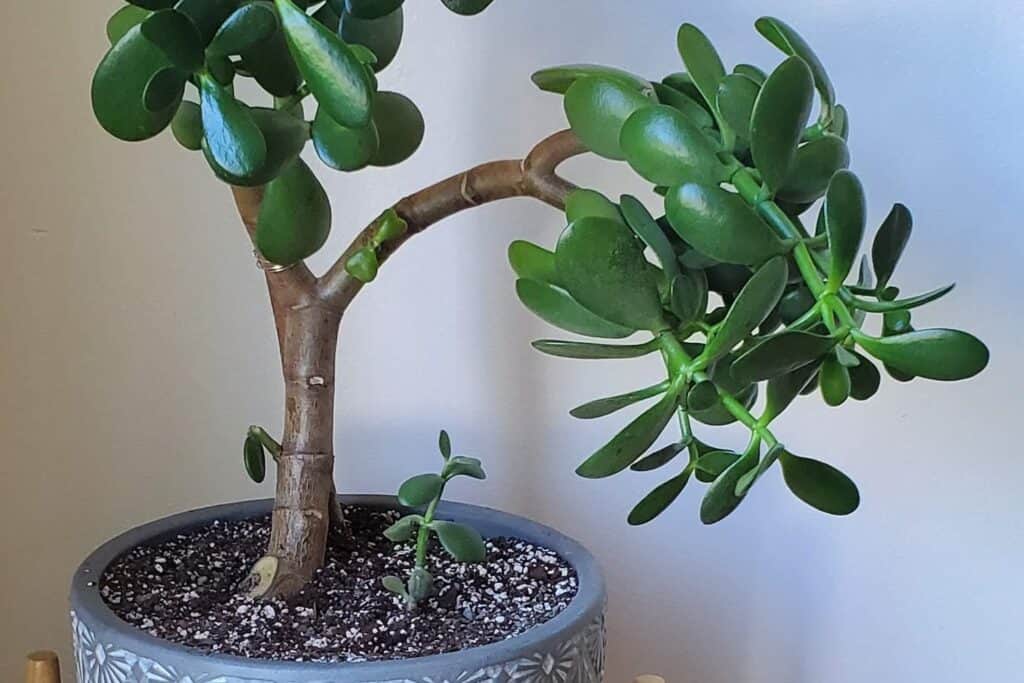
A droopy stem could mean that the plant is overwatered or underwatered (helpful, right?). Unless the plant was grossly neglected for a long period of time, it’s more likely that the plant is dying from being overwatered.
If the stem is drooping due to being overwatered, it’s likely on its way out. You can certainly remove the plant from its pot, allow it to dry out for 24 to 48 hours, and then repot it in fresh soil.
Do not water the plant for at least a week, and maybe far longer if the plant is still droopy or soft.
Give it time. Succulents can live off of the water stored in their leaves for long periods of time. In the long run, it’s better to underwater them a bit than to overwater them.
Related: How to Fix a Leggy or Tall Succulent in Three Simple Steps
9. White Cotton or Sticky Residue
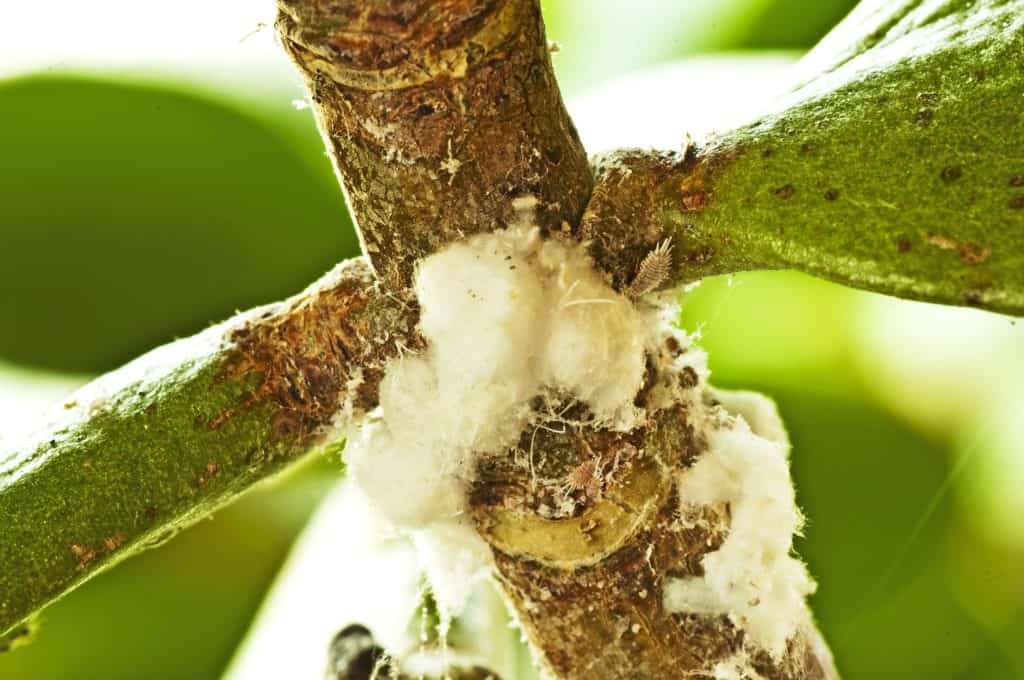
If you notice white cottony patches or a sticky residue on your succulent, these are probably mealybug nests. Mealybugs are small, white insects that feed on the sap of plants. They can do a lot of damage to a plant if left unchecked.
To get rid of mealybugs, you can use an insecticidal soap or neem oil. You can also try wiping them off with a cotton swab dipped in rubbing alcohol.
Once you’ve removed the mealybugs, make sure to monitor your plant closely for any further outbreaks. Mealybugs can spread quickly and be difficult to get rid of completely.
Make sure to treat the top of the soil, too. If the bugs reappear in a few days, you’ll need to repot your succulent in fresh soil and treat it all over again until the bugs are completely eradicated.
10. Scratches and Cuts
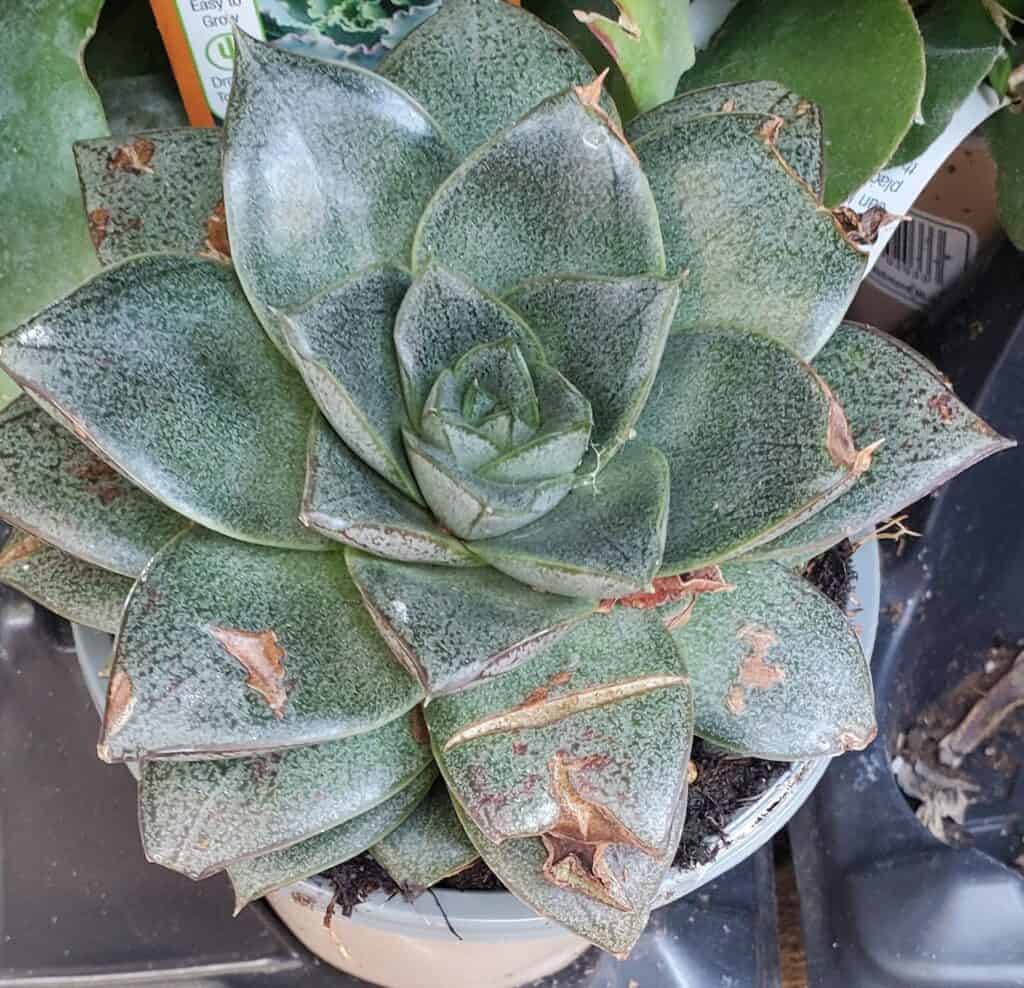
If you’re noticing fresh or scabbed cuts and scratches on your succulent’s leaves, there could be a couple of reasons. Succulents are extremely delicate, and a slight bump or brush against an object can cause marks to appear. Additionally, there could have been a tiny, unnoticeable mark on a baby leaf, and as the leaf grows, so does the scar tissue. It’s possible that the scratch was there all along, but you’re only just noticing it now as the plant grows.
Finally, beware of cats or other prowlers if your plants are outside. It didn’t take me long to realize that my succulents couldn’t be left within reach of my cat. He stole some leaves and left bite and scratch marks on some others!
If your plant has any scratches or cuts, it’s important to treat them as soon as possible. If the wound is left untreated, it can start to rot and eventually kill the plant.
The best way to treat a scratch or cut is with a fungicide. This will help prevent the wound from getting infected and will speed up the healing process.
It’s Okay to Start Over
A dying succulent is a sad thing. But if I allowed myself to feel like a failure every time one succulent died, I would never have taken the opportunity to grow my collection.
The best thing you can do when your succulent is dying is to take a step back, assess the situation, and make a plan. This might mean repotting it, changing your watering habits, or giving up on that particular plant and starting over with a new one.
Remember: it’s okay to start over. Your succulent won’t be the first (or the last) to die on your watch. And that’s okay! We all have to learn and make mistakes along the way.
Related: Trustworthy Stores to Buy Succulents (Online & Local)
